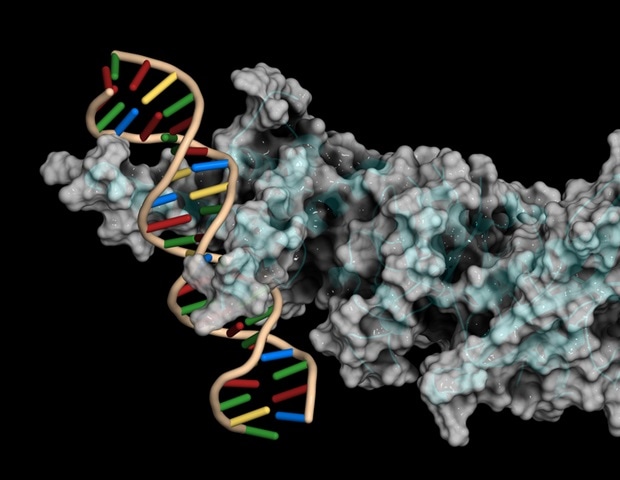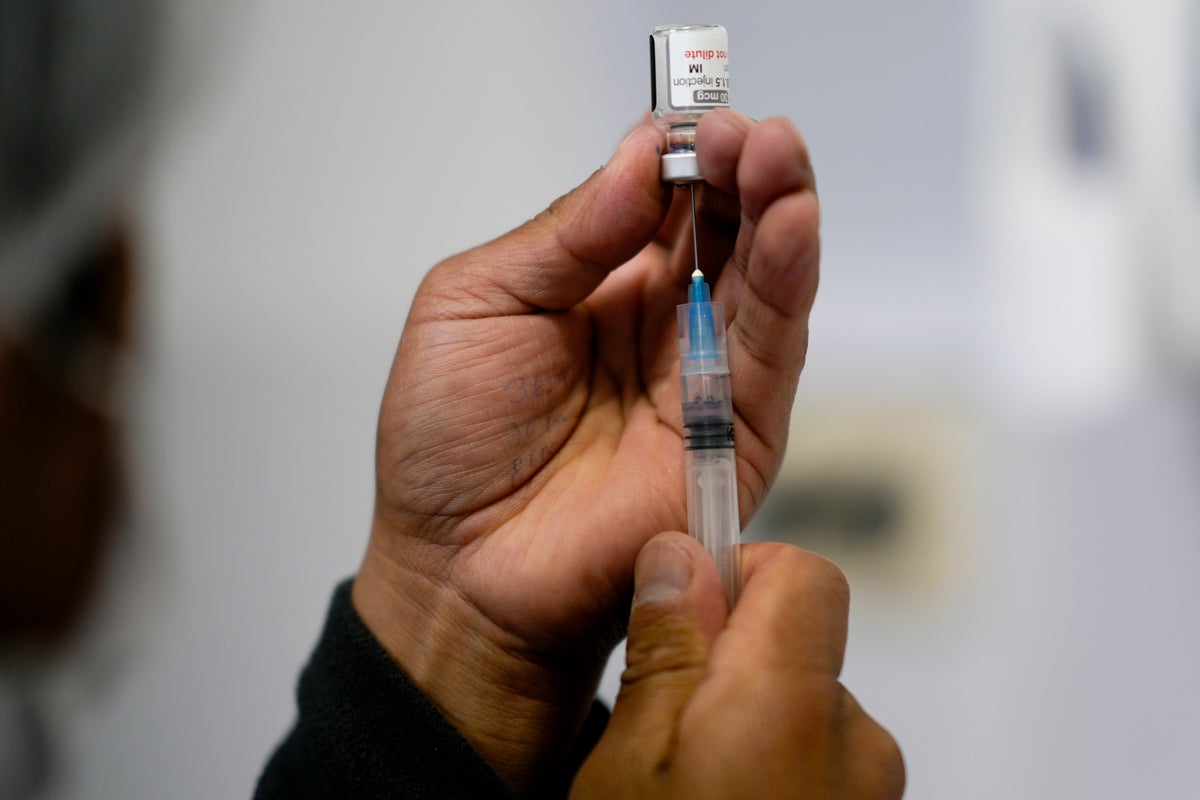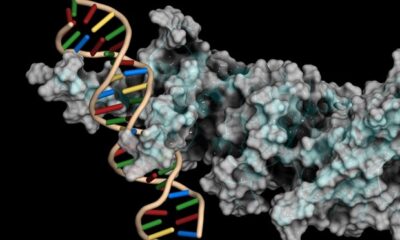Health
Researchers Discover How New Genes Function in Fruit Flies

A recent study has unveiled critical insights into how newly emerged genes, known as de novo genes, are regulated in fruit flies. Researchers from Rockefeller University have spent nearly a decade examining these genes, which spontaneously arise from previously non-coding DNA sequences. Their findings, published in the journals Nature Ecology & Evolution and PNAS, highlight the role of transcription factors and genomic neighbors in activating these genes, marking the first identification of their master regulators.
Understanding how new genes become functional is vital not only for evolutionary biology but also for comprehending diseases linked to genetic dysfunction. As stated by Li Zhao, Head of the Laboratory of Evolutionary Genetics and Genomics at Rockefeller, “The more we know about de novo regulation, the more information we have about gene expression and regulation itself.” This knowledge can significantly impact the study of diseases like cancer, which often involve rapid genetic dysregulation.
Uncovering Gene Regulation
When Zhao established her lab eight years ago, de novo genes were a relatively new discovery in genetics. As she began cataloguing these intriguing genes, Torsten Weisel, a Nobel laureate from 1981 and president emeritus of Rockefeller, expressed a keen interest in the regulation of these genes. During a casual conversation over lunch, he posed a question that would steer Zhao’s research: how are these genes regulated?
Despite initially feeling unprepared to answer, Zhao was inspired to investigate the regulatory mechanisms behind de novo genes. Advancements in technology and computational methods allowed her team to pinpoint specific transcription factors that influence the expression of these genes. By applying single-cell sequencing techniques to the testis of Drosophila, where many de novo genes are found, they laid the groundwork to explore their regulation.
In the Nature Ecology & Evolution study, the researchers identified three transcription factors that act as master regulators for de novo genes. They analyzed gene expression across hundreds of thousands of cells, discovering that only about 10 percent of transcription factors controlled the majority of these new genes. By engineering flies with varying copy numbers of these factors and conducting RNA sequencing, they confirmed their pivotal role in gene regulation.
Co-Regulation and Implications
The researchers expanded their investigation in the PNAS paper, focusing on the genomic neighborhoods surrounding de novo genes. They explored whether these emerging genes are co-regulated with more established genes nearby. Through extensive analysis of gene expression patterns and chromatin accessibility data, they found that de novo genes often share regulatory elements with adjacent genes. This suggests a collaborative mechanism where neighboring genes influence one another’s regulation.
Zhao observes that the two studies are interconnected, emphasizing how the cellular environment impacts new genes and how genes can work together in a regulatory capacity.
While the research elucidates the regulation of de novo genes, it also raises questions about their origins. Zhao notes, “We cannot say for sure that these transcription factors caused de novo genes to originate. But we’ve now seen that tinkering with transcription factors can cause significant changes.” As her team continues to study these genes, they expect to uncover deeper insights into the evolution of gene networks and the consequences of their dysfunction.
The implications of this research extend beyond basic biological understanding. By clarifying how de novo genes arise and function, the findings may contribute to the comprehension of diseases characterized by rapid genetic changes. Zhao believes that due to their relatively recent evolution and simpler regulatory mechanisms, de novo genes could serve as a model to better understand gene expression and evolutionary processes.
Zhao concludes, “Expression and regulation is more complex than we think. De novo genes may provide a simplistic model that helps us better understand gene expression and evolution.” The ongoing research at Rockefeller University continues to shape our understanding of genetics, with potential applications in addressing genetic diseases and advancing evolutionary biology.
Health
Over 14 Million Children Miss Vaccines Globally, Warns UN

More than 14 million children around the world did not receive a single vaccine in 2024, according to a concerning report from the United Nations. This figure aligns closely with the previous year’s statistics, indicating a troubling stagnation in global vaccination efforts. The report highlights that nine countries are responsible for over half of these unvaccinated children, which raises significant public health concerns.
In their annual evaluation of global vaccine coverage, the World Health Organization (WHO) and UNICEF noted that approximately 89 percent of children under one year old received the first dose of the diphtheria, tetanus, and whooping cough (DTP) vaccine in 2024, mirroring the coverage from 2023. While the completion rate for the three-dose series increased slightly to 85 percent, officials warned that a decline in international aid could jeopardize this progress.
Policy shifts in the United States have exacerbated the situation. In January, former President Donald Trump withdrew the country from the WHO and froze nearly all humanitarian aid. Recently, Health Secretary Robert F. Kennedy Jr. announced substantial cuts to funding for Gavi, the vaccine alliance, claiming the organization had “ignored the science.” Kennedy, known for his skepticism towards vaccines, has questioned the safety of the DTP vaccine, despite its established safety and efficacy.
Tedros Adhanom Ghebreyesus, WHO Director-General, stated, “Drastic cuts in aid, coupled with misinformation about the safety of vaccines, threaten to unwind decades of progress.” UN experts emphasized the severe inequality in vaccine access, particularly in regions affected by conflict and humanitarian crises.
Countries such as Nigeria, India, Sudan, Congo, Ethiopia, Indonesia, Yemen, Afghanistan, and Angola account for 52 percent of the total unvaccinated children. Sudan reported the lowest DTP coverage, highlighting the urgent need for targeted interventions in these regions.
While global measles vaccination coverage saw a slight rise, with 76 percent of children receiving both doses, experts argue that achieving 95 percent coverage is crucial to prevent outbreaks of this highly contagious disease. The WHO reported that 60 countries experienced significant measles outbreaks last year.
The United States is currently facing its most severe measles outbreak in over three decades, while Europe reported 125,000 cases in 2024, double the previous year’s figures. In the UK, health authorities recently confirmed the death of a child from measles in a Liverpool hospital. Despite ongoing awareness campaigns, only about 84 percent of children in the UK are fully vaccinated.
Helen Bradford, a professor of children’s health at University College London, expressed her concern, stating, “It is hugely concerning, but not at all surprising, that we are continuing to see outbreaks of measles. The only way to stop measles spreading is with vaccination. It is never too late to be vaccinated — even as an adult.”
Vaccines are crucial in preventing an estimated 3.5 million to 5 million deaths annually. The current vaccination landscape underscores the need for renewed commitment to equitable healthcare access and the importance of maintaining global vaccine initiatives.
Health
Child’s Death from Measles Sparks Urgent Vaccination Call

A child in Liverpool has died after contracting measles, prompting urgent calls for increased vaccination efforts across the UK. This tragic incident follows a warning from health officials about a significant rise in confirmed measles cases nationwide. Health Secretary Wes Streeting emphasized that this death highlights the necessity for the country to “redouble its efforts” to ensure that more children receive vaccinations.
According to the UK Health Security Agency, there have been 529 laboratory-confirmed measles cases reported in England since the start of 2024. The situation is concerning, as the World Health Organization (WHO) states that achieving herd immunity requires at least 95 percent of children to be vaccinated against the disease. Current figures reveal that the UK has the lowest vaccination rates for measles among G7 countries, with only 89 percent of children receiving their first dose of the measles, mumps, and rubella (MMR) vaccine this year. In contrast, nations like Germany, France, the United States, and Canada boast rates of 96 percent, 95 percent, and 92 percent, respectively.
Understanding Measles Symptoms and Risks
Measles is a highly contagious viral illness that poses severe health risks, particularly to young children who have not been vaccinated. Symptoms typically manifest between 10 to 14 days after exposure to the virus. Initial signs include fever, cough, runny nose, and sore throat, lasting 4 to 7 days. One notable symptom is the appearance of Koplik’s spots—tiny white spots inside the mouth—followed by a distinctive blotchy red-brown rash that usually begins on the head or upper neck before spreading across the body.
If left untreated, measles can lead to serious complications, including pneumonia, encephalitis, and even death. The disease is transmitted through respiratory droplets when an infected individual coughs or sneezes, making it easy to contract measles by inhaling these droplets or touching contaminated surfaces.
Individuals with measles remain contagious from the onset of symptoms until approximately four days after the rash appears, underscoring the importance of vaccination to prevent outbreaks.
Vaccination and Preventive Measures
The most effective way to prevent measles is through the MMR vaccine. In the UK, the first dose is administered at 13 months of age, with a second dose offered at three years and four months. Adults and older children who have not been fully vaccinated can receive the MMR vaccine at any age. For more detailed information about vaccination, the NHS recommends consulting with a general practitioner.
In light of the rising cases, the NHS urges parents to ensure their children are up to date with their vaccinations. They can find additional resources about the risks associated with unvaccinated children through the NHS website.
If a child does contract measles, several steps can help manage symptoms and reduce the risk of spreading the infection. Over-the-counter medications may alleviate fever and discomfort. In severe cases, particularly if complications arise, hospitalization may be necessary for proper treatment.
This recent case in Liverpool highlights the urgent need for public health initiatives aimed at increasing vaccination rates to protect children and prevent further fatalities. For more information on measles symptoms and vaccination, visit the NHS website.
Health
New AI Model Revolutionizes IVF with Enhanced Embryo Selection

A groundbreaking artificial intelligence tool, the Foundational IVF Model for Imaging (FEMI), has been developed to significantly enhance embryo assessment in in vitro fertilization (IVF). Trained on an extensive dataset of approximately 18 million time-lapse images, FEMI aims to improve the accuracy of embryo selection, offering a non-invasive alternative that could revolutionize traditional IVF testing methods.
Advancements in Embryo Assessment
A study published in Nature Communications assessed the performance of FEMI across multiple clinical tasks such as ploidy prediction, blastulation time prediction, and blastocyst quality scoring. The study highlights the pressing need for more efficient and standardized methods to evaluate embryos, as traditional approaches often suffer from high costs, a lack of uniformity, and inconsistent regulations regarding preimplantation genetic testing for aneuploidy (PGT-A). These limitations can adversely affect IVF success rates, leading to emotional and financial stress for patients.
FEMI’s introduction is particularly timely, as it offers a solution to these challenges. By leveraging artificial intelligence, the model enhances the prediction of embryo morphology and ploidy status, which are critical for successful IVF outcomes. Previous models, like the Blastocyst Evaluation Learning Algorithm (BELA), have shown promise but often rely on embryologist input, limiting their efficacy. In contrast, FEMI employs a self-supervised learning approach using Vision Transformer masked autoencoders (ViT MAE), allowing it to independently analyze and learn from extensive datasets.
Training and Performance Metrics
The FEMI model utilized a diverse training dataset of time-lapse images captured from multiple IVF clinics. Images were collected after 85 hours post-insemination and were tightly cropped around the embryos to enhance feature learning. The dataset was divided into an 80% training and 20% validation split, treating each image as an independent sample.
In evaluating FEMI’s capabilities, the study compared its performance against several benchmark models, including MoViNet, VGG16, and EfficientNet V2. The findings indicated that FEMI significantly outperformed these models, particularly in predicting ploidy under conditions of low embryo quality. Notably, it achieved superior results in overall blastocyst scoring and inner cell mass scoring across various datasets, demonstrating its reliability in embryo assessment.
FEMI also excels in accurately predicting blastulation time, a key factor for embryologists in assessing embryo quality. By classifying embryo stages as a regression task, FEMI achieved a top-1 accuracy of 60.31%, comparable to Embryovision’s 60.58%, illustrating its potential to refine developmental monitoring processes in IVF.
Despite the promising results, the authors of the study acknowledge some limitations. The segmentation and stage prediction tasks were trained and tested on the same datasets, which could affect generalizability. Additionally, the ploidy prediction excluded mosaic embryos and relied on data collected up to 112 hours post-insemination, which may overlook viable embryos that develop later.
Looking ahead, the design of FEMI as a foundational model suggests that it can be fine-tuned and adapted for broader clinical applications. The authors propose its use as a backbone for future prediction tasks, such as implantation or live birth, contingent upon access to relevant datasets.
The study positions FEMI as a significant advancement in standardizing embryo assessment in IVF. By employing self-supervised learning on a vast and diverse dataset, it demonstrates the potential to outperform traditional models and improve overall IVF success rates. With further validation and clinical trials, FEMI could emerge as a vital decision-support tool in reproductive medicine, providing hope for many individuals seeking fertility solutions.
Health
Kids Eat Free at Beefeater and Brewers Fayre This Summer

As the six-week summer holiday approaches in the UK, families can take advantage of an exciting offer from two well-known restaurant chains. Beefeater and Brewers Fayre have announced that children aged 16 and under can eat for free, making family outings more accessible and enjoyable.
This initiative will run from July 2023 until the end of the school holiday period. Each child can receive one complimentary meal for every adult meal purchased at participating locations. This promotion aims to alleviate some of the financial pressure that families often face during the summer months.
Affordable Family Dining Options
With the cost of living continuing to rise, many families are seeking budget-friendly activities. The offer from Beefeater and Brewers Fayre provides an excellent opportunity for parents to enjoy dining out without overspending.
The restaurants have curated menus specifically for this promotion, ensuring that children have a variety of meal options to choose from. Choices include popular dishes that cater to younger tastes, making it easier for parents to satisfy picky eaters.
Impact on Families
This move is expected to resonate well with families, as dining out can quickly become expensive. According to industry reports, family dining has seen a decline in recent years due to rising prices. By offering free meals for children, these restaurant chains are not only encouraging families to dine out more but also fostering a sense of community during the summer holiday.
Many parents appreciate the convenience of dining at establishments that offer a family-friendly experience. This promotion aligns with the increasing demand for affordable dining solutions and reflects a broader trend in the hospitality industry to cater to families.
As the summer holiday draws closer, families can plan outings with the reassurance that they can enjoy quality meals together without straining their budgets. The initiative by Beefeater and Brewers Fayre is likely to bring joy to many households looking to create lasting memories during the summer months.
-

 Business1 day ago
Business1 day agoTrump’s “One Big Beautiful Bill” Faces Economic Scrutiny
-

 Business1 day ago
Business1 day agoNew Study Links Economic Inequality to Lower Well-Being Globally
-

 Sports1 day ago
Sports1 day agoSheffield United’s Young Talent Embraces Championship Opportunity
-

 Health1 day ago
Health1 day agoAI Tool EAGLE Streamlines Lung Cancer Mutation Detection
-

 Sports1 day ago
Sports1 day agoEverton Pursues Johan Bakayoko as Transfer Deadline Approaches
-

 Top Stories1 day ago
Top Stories1 day agoAustralian Man Arrested for Alleged Damage to Stone of Destiny
-

 Lifestyle1 day ago
Lifestyle1 day agoBrits Identify Adulting Challenges: Cleaning, Cooking, and Time Woes
-

 Science1 day ago
Science1 day agoStudy Reveals Widespread Flooding in North Carolina Exceeds Expectations
-

 Top Stories1 day ago
Top Stories1 day agoProtests Erupt in Niksic as Officials Celebrate Controversial Events
-

 Politics1 day ago
Politics1 day agoUncertain Future for The Royal Albert Pub as Landlord Departs
-

 Top Stories1 day ago
Top Stories1 day agoBoeing 787 Returns to London After Short Flight to Bogotá
-

 Top Stories1 day ago
Top Stories1 day agoAtakule Tower Illuminated in Montenegro’s Colors for National Day











